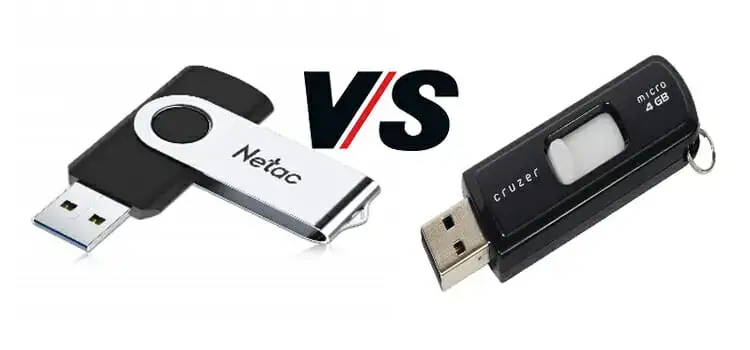thumb drive vs flash drive. Are you interested in purchasing a USB drive but unsure of which kind you require? Then you should read this. Here, we talked about flash drives and thumb drives. In order to assist you in selecting the precise type you like, we have highlighted the distinctions between them.
thumb drive vs flash drive.Discovering what a thumb and flash drive are can help us understand their differences.
Flash Drive
An ultra-portable storage device without moving parts, like conventional hard drives, is a USB flash drive. To connect to computers, they have built-in USB type A and USB type c ports. Most of them can be written on. It is also known as a USB drive or a solid state drive (SSD). They are robust and compact in size.
Thumb Drive
Thumb Drives are incredibly tiny data storage devices that store data on flash memory chips. Usually, it is only a few of inches long. It utilizes USB ports to connect to computers. More data can be stored on a thumb drive than on a CD-RW or DVD-RW. Also faster is Thumb Drive. Because of their little size, thumb drives are so termed.
Difference Between a Flash Drive And A Thumb Drive
Contrary to popular belief, flash drives and thumb drives are not interchangeable. They differ greatly in a number of significant ways. The following outline the differences between a flash drive and a thumb drive:
Purpose
Although a flash drive, also known as a compact flash (CF) drive, uses flash memory to store data, a thumb drive also serves as a typical transportable USB storage device in addition to serving as a means of data storage and transfer.
Types of Memory Storage
The technology used to store memory on a flash drive and a thumb drive differs significantly. A thumb drive is a solid state drive (SSD), whereas flash drives are compact flash (CF). Compact flash is a high-speed device with magnetic qualities that allow it to read, write, and store data with flash memory. Unlike magnetic drives, solid state drives use flash memory, which can be read, written to, and used to transport data between computers. We can think of it as comparing SSD to milk and CF to cheese.
Applications
A thumb drive’s primary function is to transmit data from one computer to another. It takes a little bit longer. A thumb drive has far less storage than a flash drive. Typically, the market offers 8 GB, 16 GB, 32 GB, and 64 GB variants.
Flash drives are employed in heavy-duty working fields since they have a quicker access time and significantly higher store space. Flash drives can be found in smartphones, tablets, mp3 players, cameras, and other electronic devices.
Sizes And Shapes
A thumb drive, as its name suggests, is typically rectangular and has the size of a human thumb. Although the technology (SSD) they employed is somewhat sluggish, the chips can fit into smaller devices, making it very practical.
Flash drives utilize (CF) cards, which can be found in a variety of sizes and forms. However, it is smaller than those because it was created as a replacement for bigger gadgets like CDs and Hard Disc Drives (HDDs).
It won’t matter which you choose if you only need to move and store a little quantity of data; nevertheless, flash drives are far more efficient than thumb drives when moving large amounts of data.
Conclusions
These five features highlight how flash drives and thumb drives differ from one another. What is best for you to choose depends on the work you are doing. However, despite these differences, they do not compete; rather, they are made for various works.
You might find it easier to decide between these two drives after reading the above comparison of their differences.
